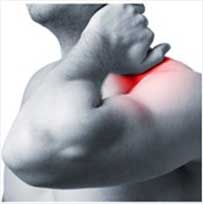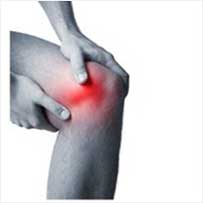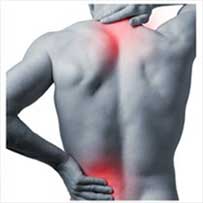Musculoskeletal disorders
Musculoskeletal disorders (MSD) affecting the upper and lower limbs are issues with the musculoskeletal system in which the professional activity plays a role in the origin, continuation or deterioration. MSD mainly affect the muscles, tendons and nerves, that is to say the soft tissues.
The parts of the body usually affected are the neck, shoulders and wrists. MSD of the lower limbs are rarer and mainly affect the knees, and are disorders affecting the joint, muscles and tendons. They may present as pain but also as stiffness, awkwardness or loss of strength. Whatever their location, MSD can become irreversible and lead to a long-term disability. So that these diseases don’t become chronic, they must be diagnosed and treated as soon as possible.
MSD are by far the most common occupational diseases. In general, MSD are related to the workstation and its environment, the organisation of work, and the social climate in the company.
MSD are expensive for companies. In fact, they result in disorganisation within the company, can be the cause of poorer performance for the company (reduced productivity, quality, etc) and have a significant impact on absenteeism and turnover. Prevention solutions can be put in place. Some MSD risk factors are related to regulatory obligations affecting arduousness at work.
To overcome these problems, GOBIO has focused of various types of professions, on the different body parts used and damaged. Therefore, our team has decided to respond to these everyday worries of employees by offering exoskeleton and ergoskeleton solutions. These solutions can not only reduce the risk of MSD but can also improve the quality of work life for employees and the quality of products.



Arduousness
The main principles:
Arduousness at work is defined as exposure to one or more occupational risk factors likely to have long-term, identifiable and irreversible effects on health.
These factors are linked to marked physical restrictions, an aggressive physical environment or to certain working patterns. Exposure to these factors is evaluated after considering the collective and individual protection measures implemented in the company.
In 2011, 10 factors were defined and included in the labour code. The law of 20 January 2014 guaranteeing the future and fairness of the pension system created an Arduousness Prevention Strategy to be implemented gradually: 4 risk factors entered into force in 2015, the others in 2016.
The 10 risk factors are as follows:
- manual lifting of loads;
- arduous postures or forced joint positions;
- mechanical vibrations;
- activities carried out in hyperbaric environments (high pressures) – in force in 2015;
- dangerous chemical agents, including dust and smoke;
- extreme temperatures;
- noise;
- night work – in force in 2015;
- work in successive shifts – in force in 2015;
- repetitive work – in force in 2015.





